Welcome to animals that start with P.
If you’ve been searching for animals starting with P, you’re in luck. You’ve come to the end of your search. We’ve put together a list of twenty animals that begin with the letter P, and some fun facts about them! You can find these animals in many parts of the world, maybe even close to you.
Let’s go through the list together, shall we?
Overview of Animals that Start with P
1. Paddlefish
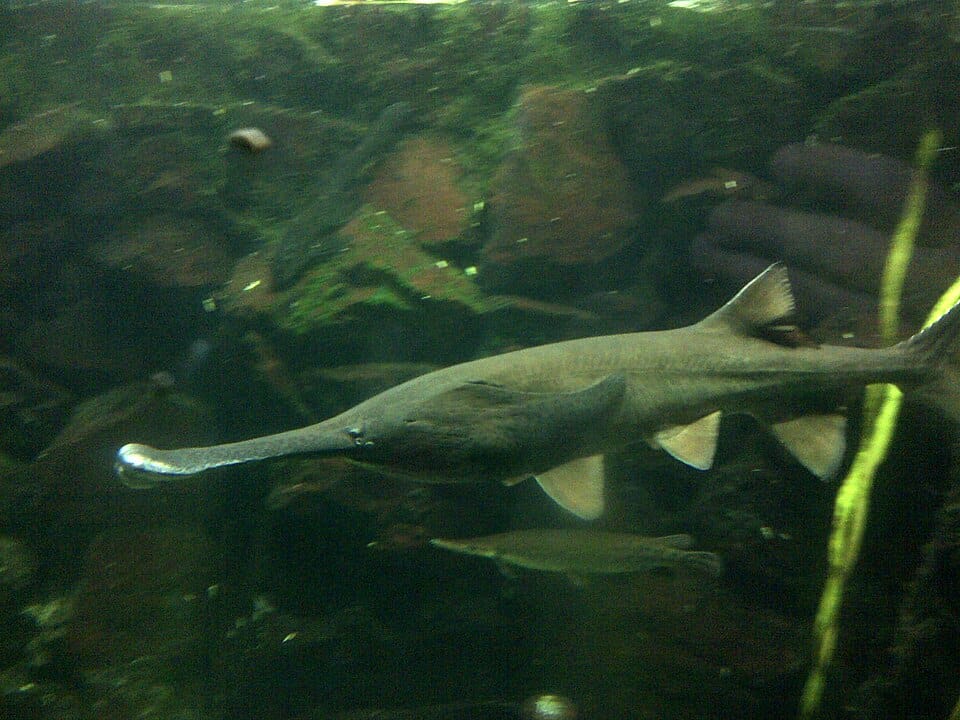
| Scientific Name | Polyodon spathula |
| Where It Lives | River basin |
| What It Eats | Filter feeder, primarily consuming zooplankton |
| Conservation Status | Not specifically mentioned |
Fun Fact: Paddlefish get their name from their paddle-like snouts used to track electrical waves from zooplankton.
Paddlefish haven’t undergone many changes since the Cretaceous period. Paddlefish are large freshwater fishes that can get up to seven feet long. Despite their size, these fishes feed on zooplankton alone. They are fished for their flesh, but food industries also seek after the caviar made from their Roe.
2. Pademelon

| Scientific Name | Thylogale |
| Where It Lives | Forests of Australia and New Guinea |
| What It Eats | Herbivorous, eating grasses, leaves, and occasionally small insects |
| Conservation Status | Varies by species |
Fun Fact: Pademelons are born tiny, blind, furless, and defenseless.
Pademelons are marsupials that can be found in Australia. They are closely related to wallabies and kangaroos but are solitary animals. They are nocturnal, so they only come out to eat berries, leaves, and grasses at night.
3. Pangolin

| Scientific Name | Pholidota |
| Where It Lives | Africa and Asia |
| What It Eats | Ants and termites |
| Conservation Status | Ranges from Vulnerable to Critically Endangered due to illegal wildlife trade |
Fun Fact: Pangolins can roll into a ball when threatened to protect themselves.
These animals look a lot like anteaters would if they had scales. They have a similar diet of ants and insects; they have long tongues and elongated snouts.
The Pangolin is the most trafficked animal in the world. You can read our complete guide on Pangolins to learn more about this vulnerable animal.
4. Porcupine
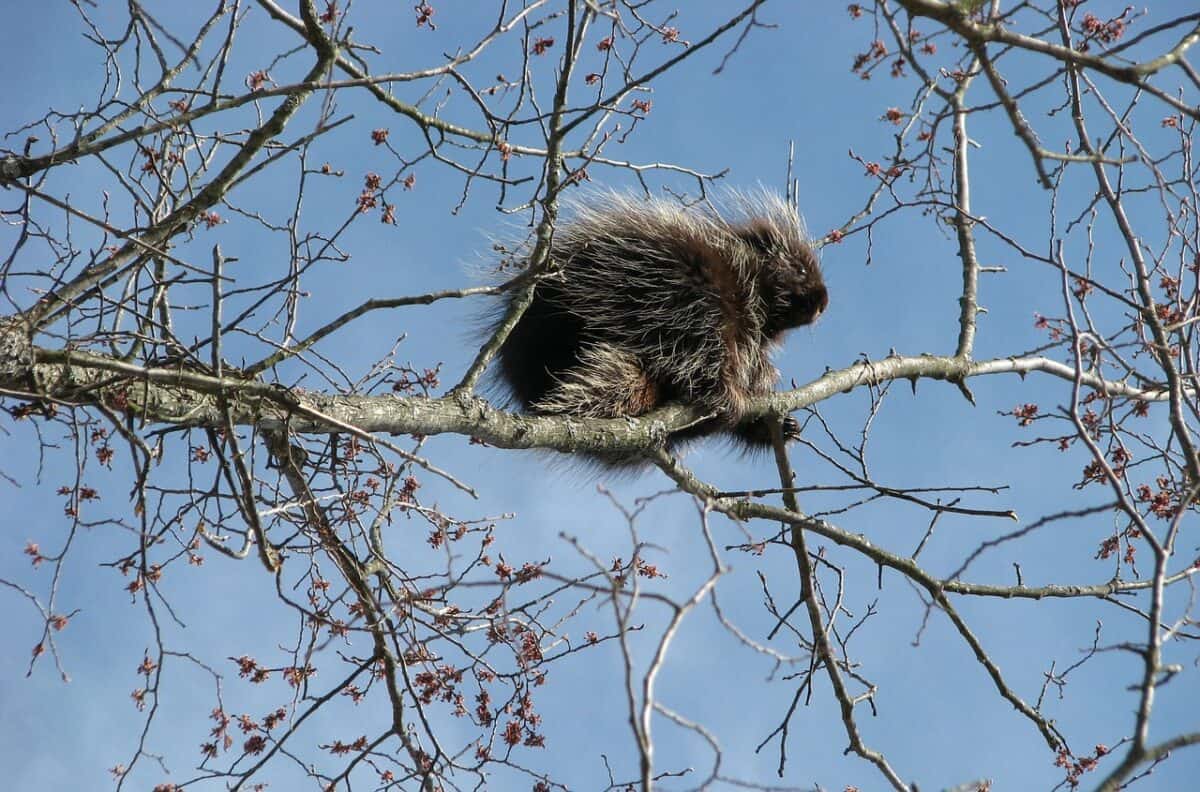
| Scientific Name | Erethizon dorsatum |
| Where It Lives | Various habitats in North America, South America, Europe, Asia, and Africa |
| What It Eats | Herbivore, eating leaves, twigs, and green plants |
| Conservation Status | Varies by species |
Fun Fact: Porcupines do not shoot their quills; however, their quills are easily detachable and can be dropped in the path of predators.
The spiky bodies of these animals are very distinctive. Porcupines are famous for the quills that cover their bodies, but they have hair on their front ends.
5. Parrot
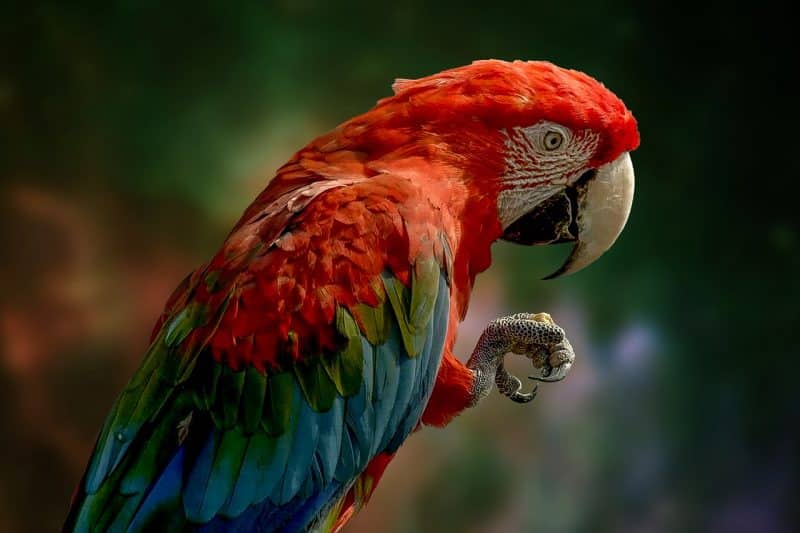
| Scientific Name | Psittaciformes |
| Where It Lives | Tropical and subtropical regions around the world |
| What It Eats | Seeds, nuts, fruit, buds, and other plant material |
| Conservation Status | Varies by species, with some endangered due to habitat loss and pet trade |
Fun Fact: Parrot brains evolved similarly to primate brains, making them so smart.
These colorful birds are very popular as pets. Not just for their beautiful and bright feathers but also their wit. These long-living birds are famous for their ability to speak, and mimick sounds in the wild as well!
Parrots can mimic sounds they hear which include words and sentences.
6. Patas Monkey

| Scientific Name | Erythrocebus patas |
| Where It Lives | Open grasslands of Central Africa |
| What It Eats | Omnivorous, eating fruits, insects, and small animals |
| Conservation Status | Least Concern, but facing threats from habitat destruction and hunting |
Fun Fact: Patas monkeys are the fastest primates in the world.
These are large monkeys that inhabit the grasslands of Central Africa. These omnivores eat lizards, birds’ eggs, and fruits and raid farms for crops.
7. Peacock
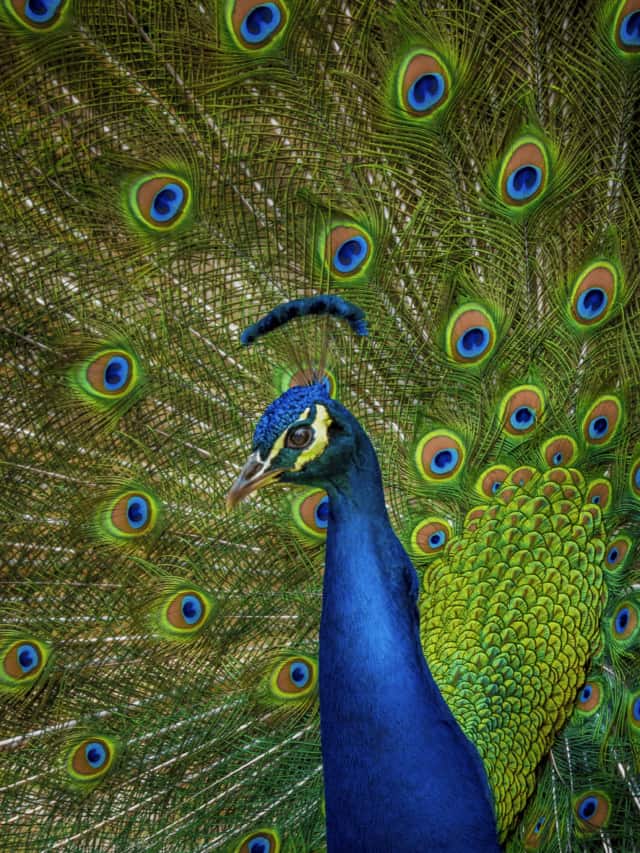
| Scientific Name | Pavo cristatus |
| Where It Lives | Native to South Asia, introduced elsewhere |
| What It Eats | Omnivorous, including seeds, insects, fruits, and small mammals |
| Conservation Status | Least Concern, but populations are decreasing in the wild |
Fun Fact: A group of Peacocks is called a pride or an ostentation.
Peacocks are notable for their bright tail feathers and intricate mating dances. They also have eyespots on those feathers, called ocelli, to dissuade predators.
8. Peacock Spider

| Scientific Name | Maratus |
| Where It Lives | Australia |
| What It Eats | Small insects |
| Conservation Status | Not widely studied, but habitat destruction could pose a threat |
Fun Fact: Peacock spiders can see ultraviolet light.
Peacock spiders feature bright colors and have a mating dance, just like actual peacocks. These tiny spiders are not poisonous despite their coloration.
9. Pelican

| Scientific Name | Pelecanus |
| Where It Lives | Lakes, rivers, and seacoasts around the world |
| What It Eats | Mainly fish, caught by diving or scooping with their large bill |
| Conservation Status | Varies by species, with some threatened by habitat loss and pollution |
Fun Fact: There is a myth that says pelicans stab themselves and feed their blood to their young. That isn’t true.
The pouch in its beak is a distinctive feature of a pelican. These waterbirds feed on fish that they catch with their beak pouches.
10. Pufferfish
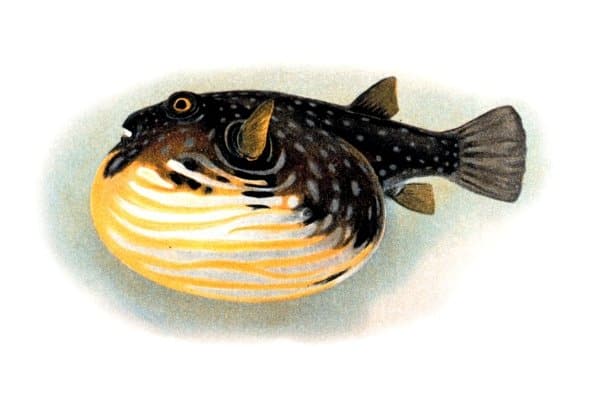
| Scientific Name | Tetraodontidae |
| Where It Lives | Tropical and subtropical ocean waters |
| What It Eats | Algae, invertebrates, and sometimes shellfish |
| Conservation Status | Varies by species, with some threatened by habitat loss and pollution |
Fun Fact: Pufferfishes seem to have romantic feelings for their mates.
These poisonous fishes can puff up and double in size in the presence of threats. Pufferfishes are very aggressive and are usually solitary.
11. Pere David’s Deer

| Scientific Name | Elaphurus davidianus |
| Where It Lives | Reintroduced in China; originally extinct in the wild |
| What It Eats | Grasses and aquatic plants |
| Conservation Status | Extinct in the Wild, exist only in captivity and reintroduced populations |
Fun Fact: Pere David’s Deers have spread hooves with webbing that help them wade in water bodies.
This is a strange member of the deer family that predominantly lives in China. Pere David’s Deer are usually found close to water bodies or swampy areas.
12. Peregrine Falcon
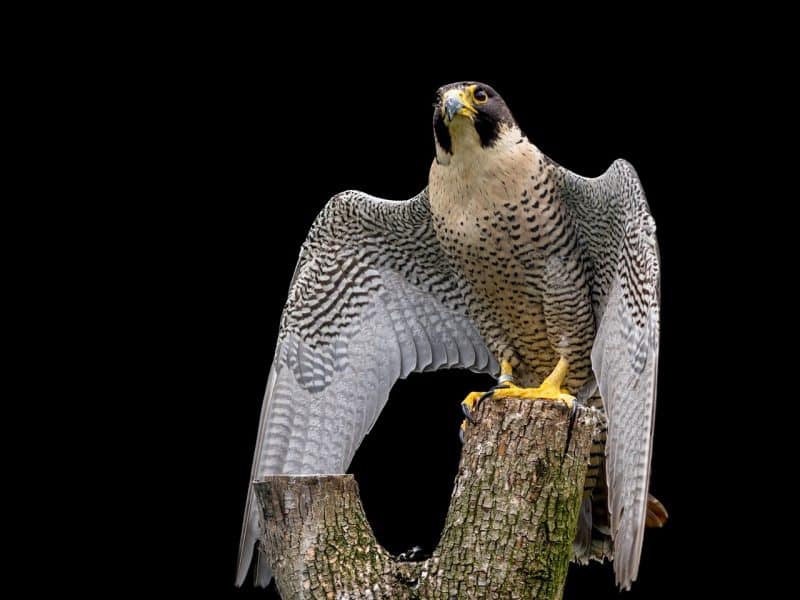
| Scientific Name | Falco peregrinus |
| Where It Lives | Worldwide, across all continents except Antarctica |
| What It Eats | Primarily birds, caught in flight |
| Conservation Status | Least Concern, populations have recovered significantly after DDT ban |
Fun Fact: Peregrine falcons are the fastest animals on earth, having been recorded to reach 242mph while diving for prey.
The Peregrine Falcons are accomplished birds of prey. These birds are known to dive from above when hunting other airborne birds.
They mate for life.
13. Pheasant

| Scientific Name | Phasianus colchicus |
| Where It Lives | Asia, with introduced populations in other regions |
| What It Eats | Omnivorous, including seeds, insects, and small animals |
| Conservation Status | Varies by species, with some threatened by habitat loss and hunting |
Fun Fact: Pheasants have dust baths to cleanse themselves.
Pheasants are a prevalent species of brightly-colored game birds with long tail feathers.
These birds can run fast and fly in times of danger.
14. Pig
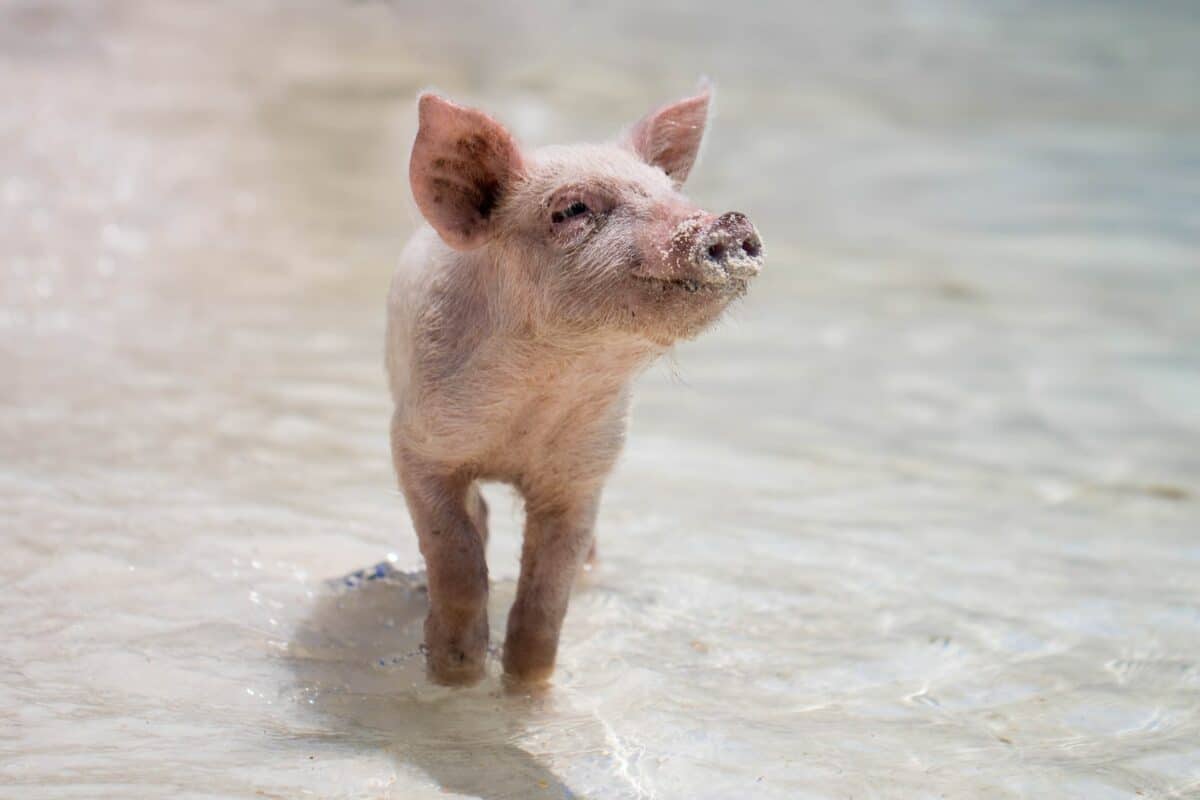
| Scientific Name | Sus scrofa domesticus |
| Where It Lives | Domesticated worldwide |
| What It Eats | Omnivorous, with a diet including grains, fruits, and vegetables |
| Conservation Status | Not applicable, as they are domesticated |
Fun Fact: Pigs don’t have a lot of sweat glands, so they wallow in mud to regulate their body temperatures.
Pigs were one of the first animals to be domesticated by humans. There are hundreds of pig breeds, but the curly tail is unique to the domesticated ones. You can find these animals in all parts of the world.
15. Pygmy Marmoset

| Scientific Name | Martes martes |
| Where It Lives | Northern Europe and parts of Asia in forested areas |
| What It Eats | Small mammals, birds, insects, and fruits |
| Conservation Status | Least Concern, but habitat loss and fragmentation are concerns |
Fun Fact: Pygmy Marmosets are the smallest monkeys in the world.
These small monkeys are found in the Amazon forests of South America. They use their fingernails to climb trees, giving them the nickname of Finger monkeys.
16. Pine Marten
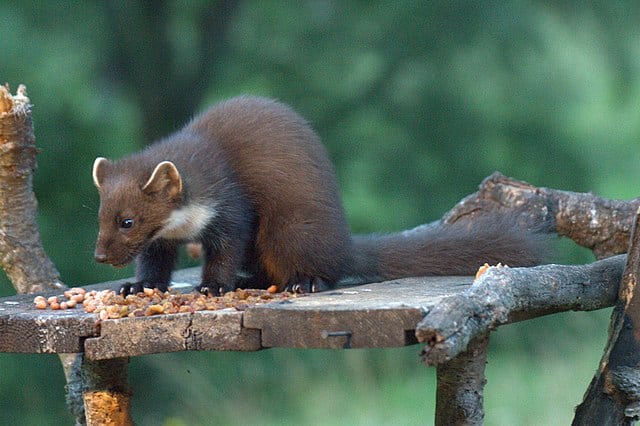
| Scientific Name | Chlamyphorus truncatus |
| Where It Lives | Central Argentina, in dry grasslands and sandy plains |
| What It Eats | Insects, worms, and plant material |
| Conservation Status | Data Deficient, with threats from farming and climate change |
Fun Fact: Pine Martens can leap from tree to tree, covering gaps of more than six feet.
Pine Martens look like weasels, but they have a partially arboreal lifestyle. These shy, nocturnal animals are hard to see in the open. Put in their speed and agility, and you’ll see why the pine Marten is such an elusive creature.
17. Pink Fairy Armadillo
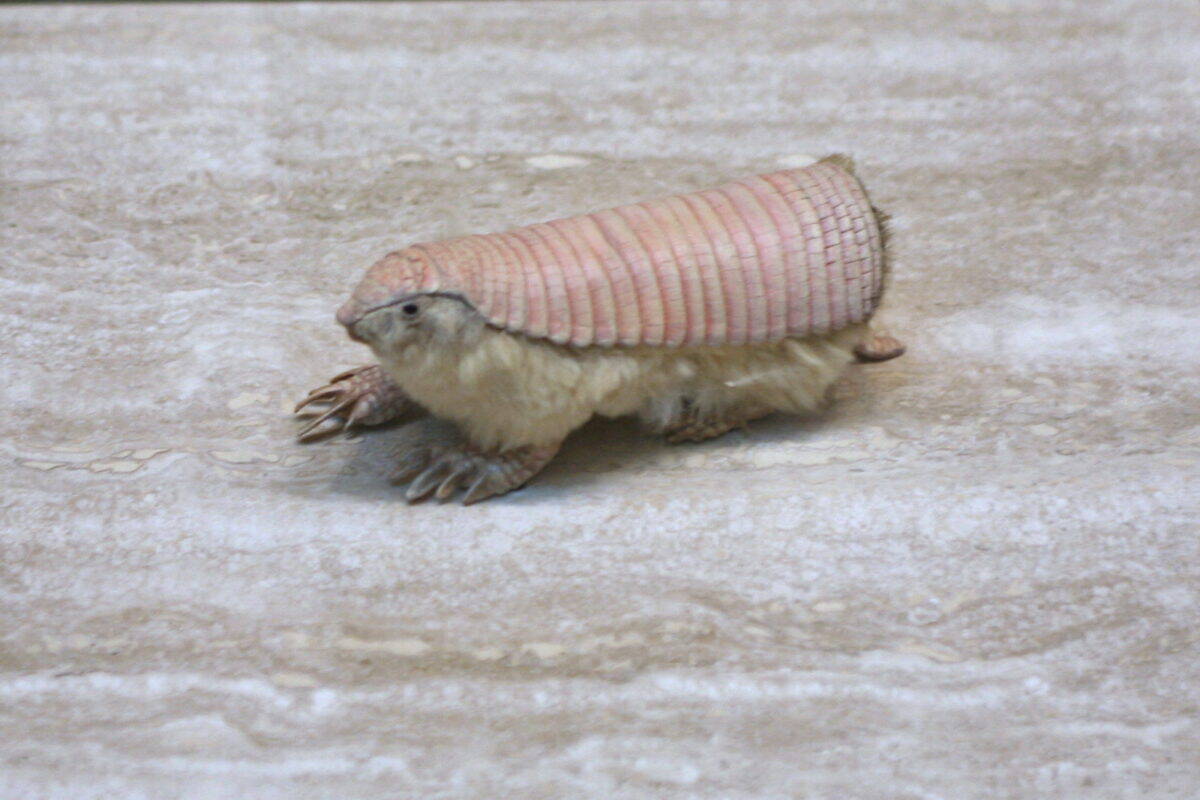
| Scientific Name | Chlamyphorus truncatus |
| Where It Lives | Central Argentina, in dry grasslands and sandy plains |
| What It Eats | Insects, worms, and plant material |
| Conservation Status | Data Deficient, with threats from farming and climate change |
Fun Fact: Pink Fairy armadillos are very good at burrowing and navigating underground.
With its length of 13cm, the Pink Fairy armadillo is the smallest in the world. It gets its name from its size and the color of its shell.
18. Piranha

| Scientific Name | Pygocentrus nattereri |
| Where It Lives | South American rivers and lakes |
| What It Eats | Fish, carrion, seeds, and fruit |
| Conservation Status | Varies by species, with no immediate threats known |
Fun Fact: Piranhas use their scissor-like teeth to eat anything from plants to carrion.
At first glance, piranhas might not look like aggressive feeders. But a look at its razor-sharp teeth will remove any doubt quickly.
19. Platypus

| Scientific Name | Ornithorhynchus anatinus |
| Where It Lives | Freshwater habitats in eastern Australia, including rivers and lakes |
| What It Eats | Carnivorous, eating aquatic invertebrates and small water animals |
| Conservation Status | Near Threatened, with threats from habitat destruction and water pollution |
Fun Fact: The platypus is one of only three mammals that lay eggs.
This strange-looking animal is found in Australia. They have short waterproof fur to survive in their semi-aquatic environment.
20. Polyphemus Moth

| Scientific Name | Antheraea polyphemus |
| Where It Lives | Woodlands, forests, and suburban areas across North America |
| What It Eats | Larvae feed on leaves of broad-leaved trees and shrubs |
| Conservation Status | Not listed as endangered, but habitat destruction and pesticide use are threats |
Fun Fact: Polyphemus Moths have a short life span of four days; due to this, they don’t eat. They don’t even have true mouths.
The Polyphemus Moth is a giant Moth with a striking eyespot on its wings. Its caterpillars produce silk that can be used to make clothes.
These moths are usually found in North America.
Summary of Animals that Start with P
We hope you loved the list. You can find many animals beginning with P around you. There are even more interesting animals to discover in this other list of animals that start with q. Stay safe.
Get all A-Z Animal Letters here:
- Animals That Start With A
- Animals That Start With B
- Animals That Start With C
- Animals That Start With D
- Animals That Start With E
- Animals That Start With F
- Animals That Start With G
- Animals That Start With H
- Animals That Start With I
- Animals That Start With J
- Animals That Start With K
- Animals That Start With L
- Animals That Start With M
- Animals That Start With N
- Animals That Start With O
- Animals That Start With Q
- Animals That Start With R
- Animals That Start With S
- Animals That Start With T
- Animals That Start With U
- Animals That Start With V
- Animals That Start With W
- Animals That Start With X
- Animals That Start With Y
- Animals That Start With Z
Thank you for reading!
Join our Forum for free today!

- These are The 5 Largest Great White Sharks Ever Recorded - July 19, 2024
- The Surprising Benefits of Big Game Hunting - July 18, 2024
- $100k+ Hunting Experiences The Most Expensive Animals to Pursue - July 17, 2024


